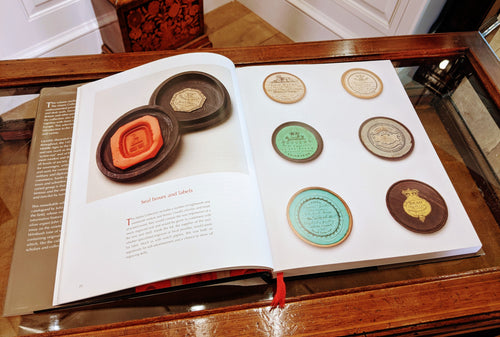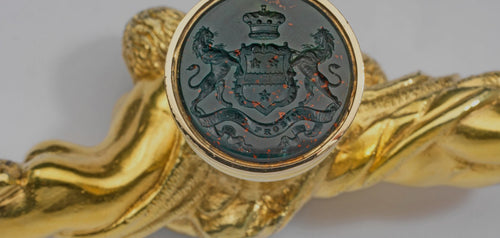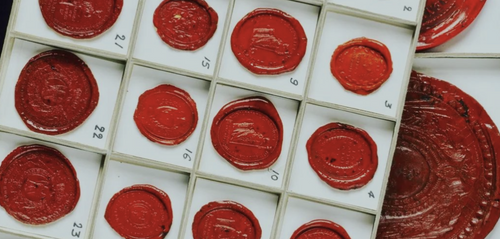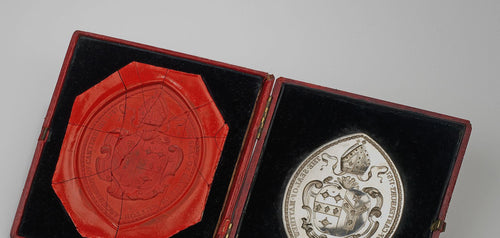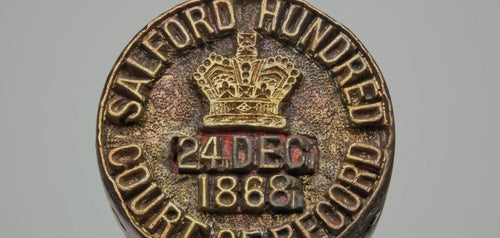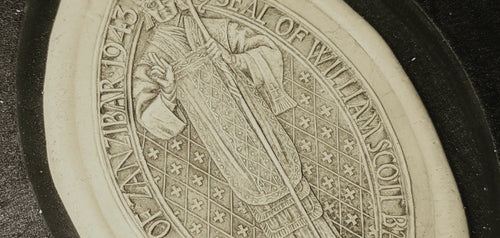


A Splendid Gold and Hardstone Princely Seal - Duke of Cambridge
A splendid gold and hardstone princely seal, dated to 1835 and made for the Duke of Cambridge, Prince George William Frederick Charles.
Seal Detail
The bloodstone handle is of faceted thistle form, emerging from an openwork gold calyx chased with rose, thistle and shamrock above an inscribed collar. The cushion is chased with galloping Hanoverian horses with further scrolls and flowers on a matted ground. The oval bloodstone matrix is spiritedly engraved with a full achievement of arms within the Garter motto, on plumy volutes, below the coronet of a royal duke.
The inscription reads from his affectionate mother aug . 8 . 1835. The arms are those of Prince George William Frederick Charles (1819–1904), son of Adolphus, Duke of Cambridge, seventh son of George III, and Augusta, daughter of Prince Frederick of Hesse-Cassel.
The seal was given by his mother to Prince George on the occasion of his confirmation at Windsor on 8 August 1835. Following the ceremony, Princess Augusta wrote to her father, ‘Thank God, it all went well ... It has been a real great happiness to me, I confess.’ On 15 August, the Order of the Garter was conferred upon the sixteen-year-old prince, an honour reflected in the design of the seal. The gravity and pomp which both occasions demanded were somewhat alarming to the Prince, who had confided to his diary, ‘The [confirmation] is a most solemn and awful engagement which I take in the eyes of my God ... [receiving the Garter] is a great honour which, as I have not actually deserved, I must merit by my own conduct’.
Prince George was born and educated in Hanover. In 1837, after serving for a short time in the Hanoverian army, he transferred to the British army with the rank of colonel. He saw service in Gibraltar, the Ionian Islands and Ireland before succeeding to his father’s title as Duke of Cambridge in 1850. On the outbreak of the Crimean War in 1854 he was placed in command of the 1st Division of the British army in the East and was soon promoted to lieutenant general. He was present at the battles of the Alma, Balaclava and Inkerman, and at the siege of Sebastopol. On 15 July 1856 he was appointed general commanding-in-chief, a position he was to retain for some forty years. This long service in command of the army was marked by many changes, prompted both by the inherent problems in the British army which were shown up during the Crimean War and by the impressive successes of the Prussian army and its methods. The Duke himself did not relish change, but saw it as his duty to carry out, to the best of his ability, the measures imposed on him and the army by the government. Throughout his career he evinced a warm interest in the welfare of the common soldier and he was famous for his plain, sometimes strong, language. His marriage to the actress Louisa Fairbrother was morganatic, their three sons not being recognised in the royal succession. The Duke’s private passion was for collecting gold boxes, and his splendid collection was sold following his death in 1904.
Seal Specification
London, dated 1835.
Height: 80 mm.
Width of matrix: 26 mm.

